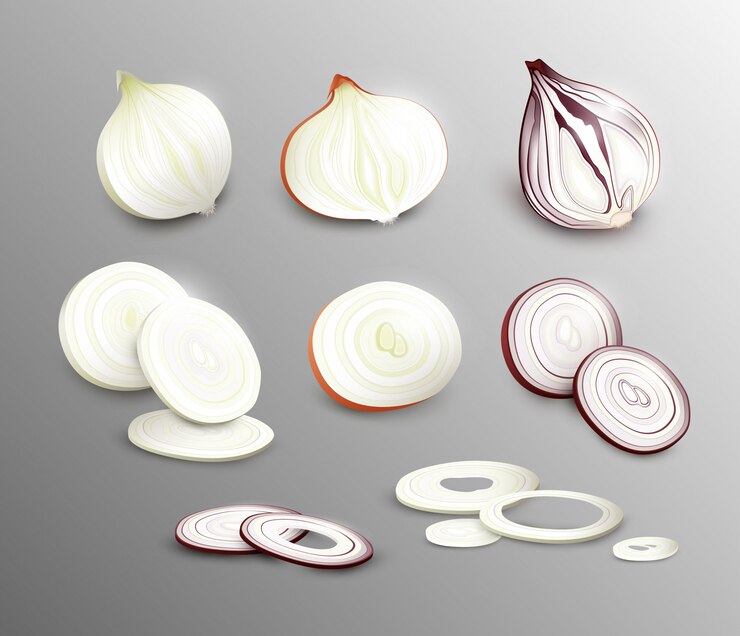Onions are a staple in the kitchen
Onions provide wonderful layers of flavor, color and texture to a wide variety of dishes. But when you consider their role in history and our health, their appeal goes beyond taste
Types of onions
-
yellow onion
It is an all-purpose onion and its use is more common than other types. This type of onion has a strong and sweet taste and the more it is cooked, the spiciness decreases and it becomes sweeter. The size of this type of onion is usually the size of a fist. Its outer skin is hard and has fleshy and juicy layers.
Yellow onions are the ones that make you cry when cut. This is due to the presence of a lot of sulfur in them, which ultimately causes its strong and spicy taste and smell. Despite the yellow skin of this onion, its flesh is white. -
White onion
White onions are white in both the outer skin and the inner flesh. White onion has a milder and sweeter taste compared to its yellow type. This feature makes it a more suitable option for consumption raw or with salad. White onion has a softer texture than yellow onion and its skin is thinner and more papery. Also, this type of onion has high water content, which makes it crispy
-
red onion
Red onion is sweet and mild enough; As a result, it can be consumed raw. Red onion is similar in flavor to yellow onion. However, its layers lack the juiciness and tenderness of the yellow onion type. Red onions are mostly found in raw foods. Compared to other onions, this type of onion has a milder and sweeter taste; For this reason, it is suitable for preparing cold sandwiches and salads.
-
The difference between red, white and yellow onions
According to the definition of each type of onion, the difference between red, white and yellow onions can be summarized in the following sentences.
Yellow onion has the strongest taste and is suitable for cooking.
White onions are milder than yellow ones. It is consumed both raw and used in cooking.
Red onion has the sweetest and mildest taste among the types of onions. It is best consumed raw.
Onion properties
Now that we have examined the difference between red, white and yellow onions, it is good to talk about the properties of onions. Onion is rich in nutrients; It means that it has few calories, but it is very high in vitamins and minerals. A medium onion has only 44 calories, but it provides a significant amount of vitamins, minerals and fiber needed by the body.
Onion is especially rich in vitamin C and contains nutrients that play a role in strengthening the immune system, collagen production, tissue repair and iron absorption. Types of onions do not differ much in their properties, so what you will read below are the properties of white, red and yellow onions.
-
Good for the heart
Onion contains antioxidants and compounds that fight inflammation and reduce triglycerides and cholesterol. These properties reduce the risk of heart diseases.
-
Anticancer compounds
Consumption of allium family vegetables such as garlic and onion is directly related to reducing the risk of some cancers including stomach and colon. The anti-cancer property of onion is due to the presence of sulfur and flavonoid antioxidants in it.
-
Help control blood sugar
Eating onions can help control blood sugar. This feature is especially important for people with diabetes. Certain compounds found in onions, such as quercetin and sulfur compounds, have anti-diabetic effects.
-
Strengthening the digestive system
Onions are a rich source of fiber and prebiotics, which are essential for gut health. A diet rich in prebiotics can help improve the absorption of important minerals such as calcium. This can improve bone health.







